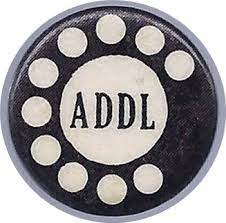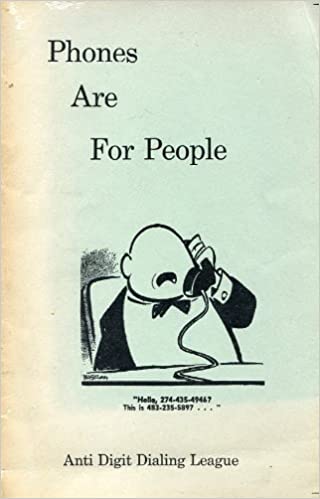In 1962 Pacific Telephone and Telegraph announced that it would remove exchange names,
Up until this point in the US telephone numbers had been prefixed with the exchange name, as a one or two letter code, which would be used in place of the digits when you dialed,
For example if you were on the GArfield exchange (GA) you’d give your number as GA 1234 or GArfield 1234, to dial this the GA would just be converted into numbers based on the dial, so GA = 42 1234.
The Bell system had wanted to do away with this for a long time – it’s inflexibility meant digits that spelled out the prefix of common place names were filled up, while others were almost unused, and was not conducive to the growth patterns of telephone systems. Letters alone limited the dialing plan to 540 combinations for the area code, for 186 million Americans at the time, while moving to all-numbers opened up for use the 0 and 1 positions on the dial (which don’t have letters associated with them), expanding the pool.
The North American Numbering Plan (NANP) had been divided by AT&T in the 1940s and from 1951 onwards was being rolled out across the bell system, so it shouldn’t have come as any great surprise that in May of 1962 Pacific Telephone and Telegraph, like many other Bell system companies, made the announcement instead of exchange names, there would be a 3 digit exchange code / area code, followed by 4 more digits for the local subscriber, what it called “All-number dialing”.
This is where our story would end if it weren’t for some outcry of locals regarding the loss of their beloved exchange codes. Letters to the editor of local newspapers led to polling by the San Francisco Chronicle revealing two-thirds of their readers opposed to all-number dialing, which led to one man – Carl V May, taking out an advertisement in the the local newspapers with a simple one line statement and address,
Join the Anti-Digit Dialing League
P.O. Box 996, Sausalito, Calif
The ad received over 3,500 responses, and a sizable following for the group sprang up practically overnight, united in their opposition to the loss of the exchange letters and the “creeping numeralism” being pushed upon them.
These people are systematically trying to destroy the use of memory. They tell you to ‘write it down,’ not memorize it. Try writing a telephone number down in a dark booth while groping for a pencil, searching in an obsolete phone book and gasping for breath. And all this in the name of efficiency ! Engineers have a terrible intellectual weakness. ‘If it fits the machine,’ they say, ‘then it ought to fit people.’ This is something that bothers me very much: absentmindedness about people.
S. I. Hayakawa
To be clear, automation and the removal of switchboard operators for local calls (Direct Digit Dialing (DDD)) (“Subscriber Trunk Dialing” or “STD” as it’s known in the UK and Australia) had happened already, so this wasn’t about people losing their jobs, but rather Citizens wanting to keep the letters of the places their dialing.
Nor were phone numbers themselves changing due to All-Digit-Dialing, if your number was GA 1234 you’d still dial 42 1234 to get there, it would just be printed as 42 1234 instead of GA 1234 in the phone books.
A steady stream of telephone customers–“mainly from the Valley,” said a Times account of the local hearings–complained that ANC was dehumanizing, violated tradition, eliminated a sense of community, increased dialing errors, made phone numbers more difficult to remember and ran up phone bills, because people no longer knew where they were calling.
ADDL’s support continued to grow, badges appeared and a legal challenge was mounted against the phone company to prevent this, and a restraining order was issued to halt the project, and the Public Utilities Commission had to go through 3,200 pages of testimony from hearings in Los Angeles and San Francisco on the impact of the All-Number-Calling system.

Comedian Alan Sherman wrote a song called “The Let’s All Call Up A.T & T And Protest To The President March” on his 1963 album “My Son, The Celebrity”, which hasn’t aged well…
But progress marched on, the restraining order was quashed and by 1964 NANP rolled on, and all-digit dialing continued to be rolled out across the rest of North America.
And as quickly as it appeared, the ADDL was gone.
NANP continued and phone numbers were changed and expanded several times since then, but never with resistance as strong as that of the ADDL.
While researching this it reminded me of Reply All episode #104 The Case of the Phantom Caller.
Further Reading
The Farmville herald., January 04, 1963, Page 1B, Image 9
